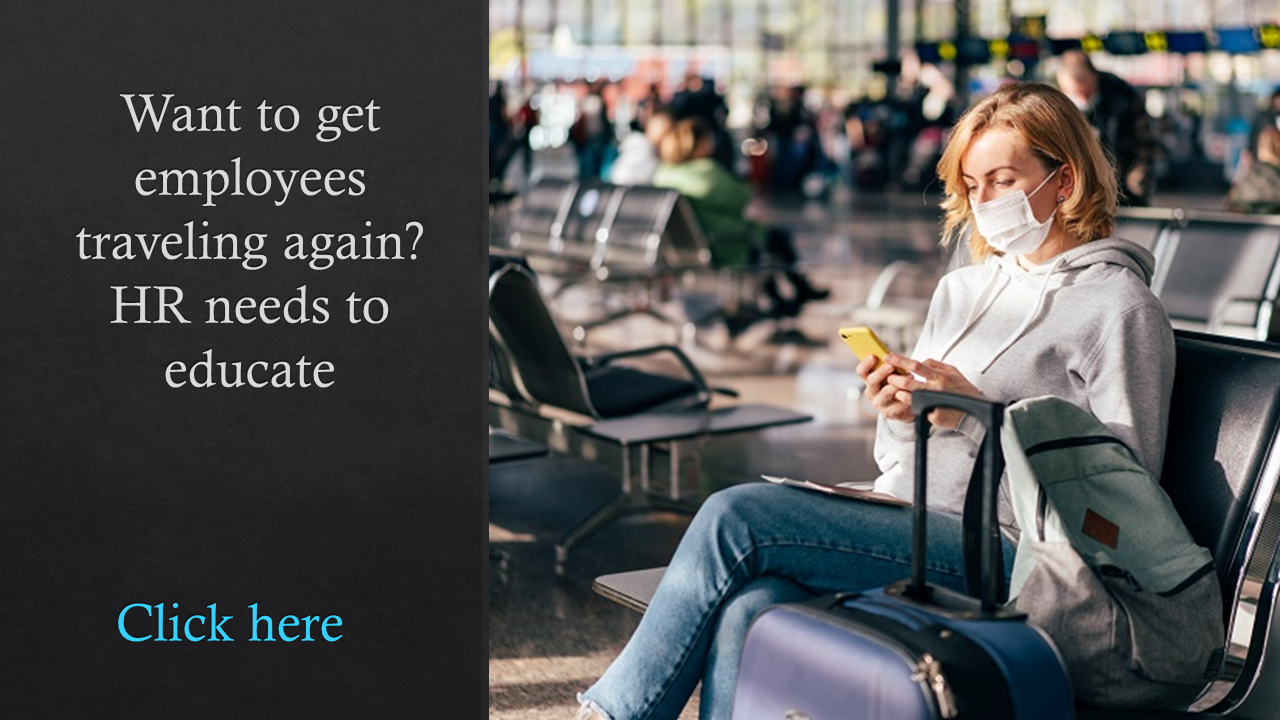The pandemic has, of course, presented host after host of challenges for employees and resulted in a sharp increase in mental health conditions. There have been quarantines, fears of getting sick, remote work worries, caregiving concerns, and much more that has affected every aspect of life and work for employees.
Now, concerns are shifting to the newest phase of the pandemic: a shift to normalcy–including a return to the workplace.
“There’s been a lot of fear and anxiety–that’s been the prevailing emotion for the last year. Now that’s changed to uncertainty over the vaccine, over return to work,” says Dr. Rachelle Scott, a psychiatrist and medical director of psychiatry at Eden Health, a startup that works with 40,000 employees across more than 100 employers.
With data finding that stress over returning to the office is sky-high, it’s a problem employers cannot afford to ignore. “Companies and employers are acknowledging they expect there will be anxiety [with a return to the office] and they want to get ahead of it. They should want to make the transition as smooth as possible and have conversations and actions to do so,” Scott says.
Scott spoke to HRE about how employees are feeling about heading back into workplaces, how HR and company leaders can ease their concerns, and why it’s a missed opportunity if they don’t.
HRE: This is an odd phase of the pandemic, where it still feels unsafe because we’re still in a pandemic, of course, but for vaccinated people, it’s safer than before, and there are a lot of opportunities to get back to normal life. What’s this like for people in terms of their mental health?

Scott: It’s important to have choice, but having choice is also anxiety-provoking. In the beginning [of the pandemic], there was an adjustment period to: you have to wear a mask and do this and do that. Then we got used to it and relied upon it. Now the introduction of a little more ambiguity and choice, I think is something that contributes to anxiety. Anytime you go from one habit to another, it takes energy, it takes effort.
Related: CDC mask guidance is upping employee anxiety. Now what?
HRE: What about that anxiety and those worsening mental health issues when it comes to people thinking about coming back into the office? What are you seeing and why?
Scott: I think there’s a social component to it. Some people might not have even worked in the office before the pandemic–maybe they got the job in the last year and started remotely. It’s kind of like high school–am I a freshman, a sophomore, a transfer student? And we even have to think about what we’re wearing, our makeup, our appearance. You have to think about things you haven’t in a while.
I do think some of the anxiety over returning to the office is not necessarily about returning to the office. It’s about, ‘I have created this life, with schedules, with routine, with rules and responsibilities at home. So now that I’m going back to the office, what’s going to happen to that life I’ve created?’ If I’m a caregiver, if I have children, if I now have this hour-long commute, how are these changes going to look? There are things I liked about my life during the pandemic; now I have to change that. There’s anxiety about that.
HRE: What about health anxiety–does that play into it? The pandemic isn’t over, of course, and mask guidance is different. So maybe you’re going to an office where people might not be wearing masks, you don’t know who’s vaccinated and who’s not. How can employers address that?
Scott: We went from that certainty of you must wear a mask to not, and there’s this honor system where you don’t know who’s vaccinated and who’s not. It’s going to be really important for employers to communicate what steps they’ve taken to make the office as safe as possible, especially knowing there will likely be a mix of vaccinated and unvaccinated people. That will be really important to ease some of the anxiety for people. But I do think we have to acknowledge that there will this period of awkwardness of not knowing–there will be some unvaccinated people and people not wearing masks, so you have to do what you can to try to make yourself comfortable and keep yourself safe.
HRE: You mention the employer piece and communicating to employees about what they’re doing to keep them safe. Is overcommunicating that information super important?
Scott: Super important. It’s super important to spell out in detail and give people facts: What have you done? What will the office setup be? Communicate how many people you’re expecting in the office, because maybe not everyone is coming back at the same time, or people are doing hybrid, so in the office for two days, out for three days. And masks–what’s the plan for that? What’s the physical spread; are there cubicles? Every other cubicle? What are the steps, even down to the cleaning protocols, like, ‘We’ll clean every night,’ or ‘We’ll have a day where nobody is in the office so we can make sure to take adequate precautions.’
I think in this case, there is no such thing as overcommunicating because there are a ton of questions that people are going to have. You want to share this with employees as early as you can–what the expectations are going to be for them and what steps they are taking. It’s going to be really key. And also, who can they turn to for questions or concerns.
HRE: Do you think employers should help with employees’ individual circumstances? For instance, if they have health concerns or if they have unvaccinated children, should they try to come up with solutions for them?
Scott: Yes, it’s important to know who your employees are. Not everyone has the same situation. Hopefully, the pandemic has opened us up to more conversations to understanding people’s personal lives in a way we didn’t before. One thing I hope employers can do is survey–get a sense of what your employee population is like. You might have employees who have chronic medical conditions that you don’t know of. Maybe you want to have a contingency plan for them. Who’s comfortable coming in? Who’s not? Who wants to be hybrid? How many caregiver [employees] do you have? Knowing your demographics, and knowing their comfort levels, can be very helpful upfront when it comes to employers’ thinking about solutions and how to implement those solutions.
HRE: As a whole, how can employers and company and HR leaders ease the collective anxiety employees are feeling?
Scott: One is acknowledge, acknowledge, acknowledge. Call it out and name it: ‘Hey, we’re thinking about coming back to work. We realize this is anxiety-provoking for many of us.’ I think what that does is just create the space to have these conversations. There’s never going to be the perfect solution for everybody, but what people want is knowing they have a space for voicing their concerns and knowing that they’re going to be heard.
Related: Return-to-workplace worries are affecting employee mental health
 HRE: Why should HR leaders take this role in mental health right now, with the return to work, and also in general?
HRE: Why should HR leaders take this role in mental health right now, with the return to work, and also in general?
Scott: I think we’re starting to understand the effects when mental health isn’t understood or acknowledged. It has an effect on employee relationships, their work, the workplace. It has an effect on burnout, on how employees show up. Over time, they will burn out, so it can affect their team and other people will have to step in and take a larger role, or that employee ends up leaving because it’s never really addressed. Then the company has to hire and train new people. From an employer’s perspective, not thinking about mental health isn’t [going to cut it.] Employers are finally realizing the role mental health plays, not just from an individual perspective but also a workplace perspective.
HRE: What do you think employers stand to lose if they don’t address the return to the office anxiety piece especially?
Scott: It’s really just a missed opportunity to connect with your employees in a way that leaves a lasting impression. It’s an opportunity to listen to employees, make them feel valued and that you care about their wellbeing. Having that conversation is really key.



